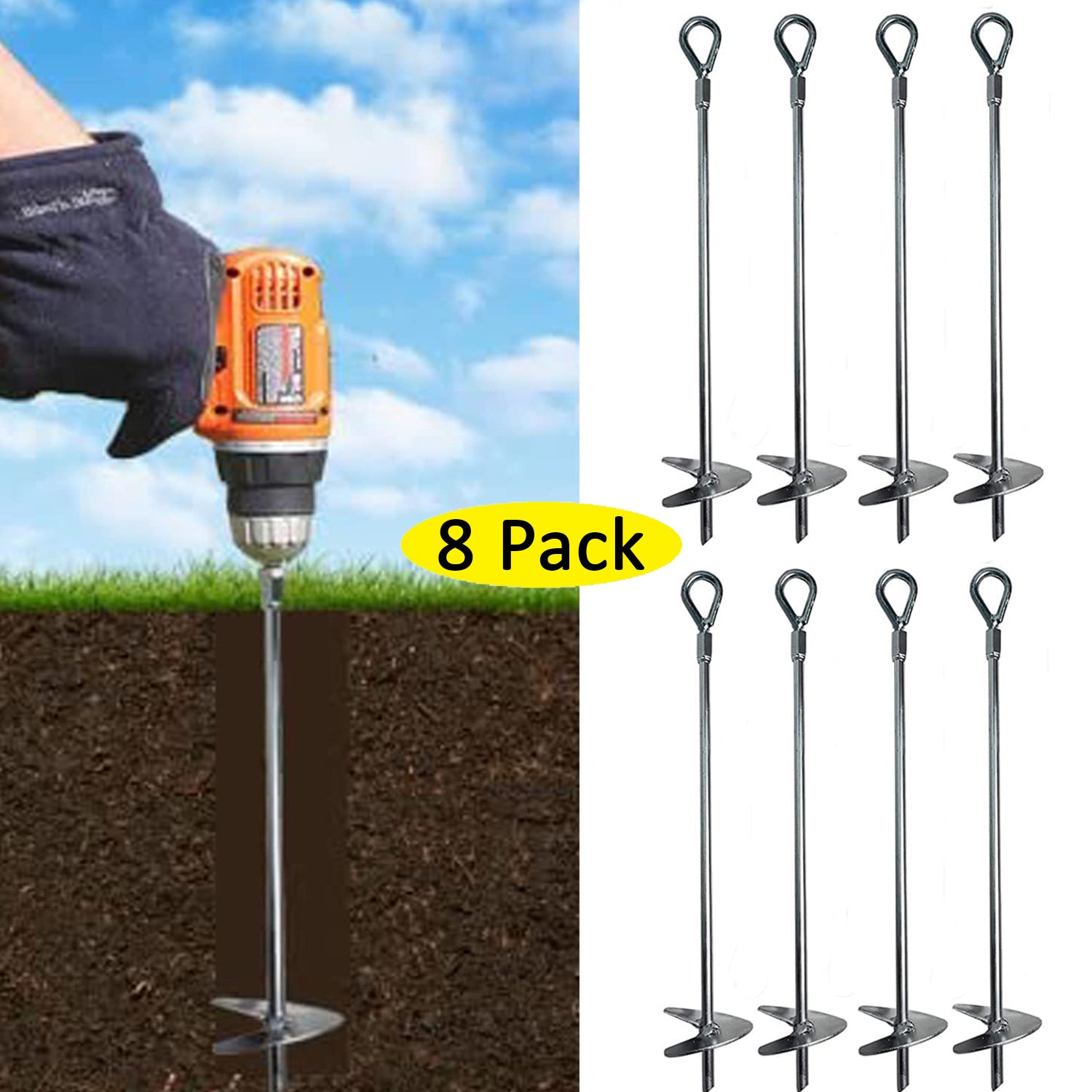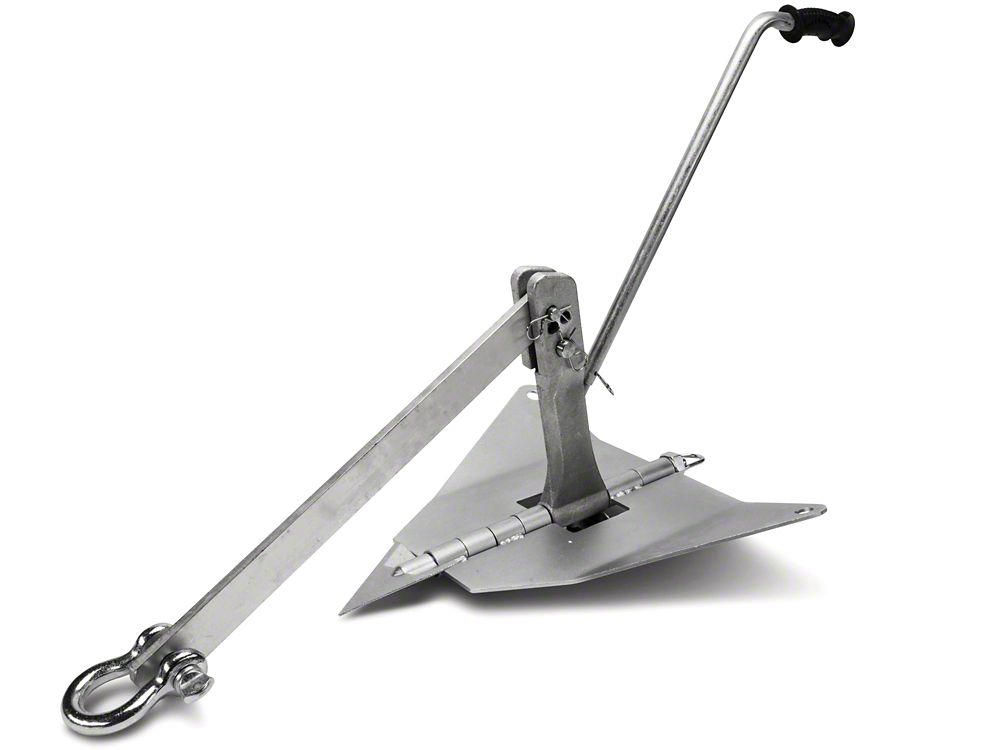Explore the Different Kinds Of Ground Anchor for Your Following Project
From auger supports, which succeed in varied dirt problems, to risk anchors created for temporary installments, the alternatives are many. Additionally, concrete and screw anchors existing one-of-a-kind advantages in particular circumstances, while deadman anchors are customized for applications needing resistance to lateral pressures.

Auger Anchors
Auger supports are a popular choice in different building and landscape design tasks because of their unique style and reliable anchoring capabilities. These anchors include a helical screw-like shaft that is driven into the ground, permitting a steady and secure hold. The spiral design assists in simple installment and maximizes resistance against side pressures, making auger anchors particularly reliable in applications such as secure fencing, temporary frameworks, and disintegration control.
The installment process of auger supports is fairly simple. They can be manually or mechanically installed, depending upon the dimension and called for deepness. This flexibility allows for their use in diverse soil conditions, from sandy to clayey terrains. Furthermore, auger supports can be quickly eliminated and recycled, which contributes to their cost-effectiveness and sustainability.
One of the substantial benefits of auger supports is their ability to disperse tons evenly throughout the surrounding soil, decreasing the threat of soil disruption and minimizing environmental impact. In addition, they are less prone to heaving or loosening up over time compared to conventional securing techniques. Auger anchors are an exceptional option for tasks calling for trustworthy and durable anchoring options.

Stake Anchors
When it pertains to protecting frameworks in a range of outside applications, risk supports provide a trustworthy and uncomplicated solution. These anchors are generally constructed from sturdy products such as steel or aluminum, made to hold up against ecological stresses while giving ideal security. Their simple design enables fast setup, making them a perfect choice for permanent or temporary anchoring needs.
Risk anchors are specifically beneficial in securing camping tents, covers, and other light-weight structures against wind and climate. They work by being driven right into the ground at an angle, creating a strong hold that withstands pull-out pressures - Ground Anchor. The effectiveness of stake anchors relies on several aspects, including soil kind, moisture content, and the angle of installation
For added protection, many stake anchors feature accessory factors for ropes or bands, enabling for tension modifications as required. In applications such as landscaping or building and construction, they can efficiently maintain tools or frameworks on unequal surface. On the whole, risk supports offer a functional and cost-effective option for securing different outdoor setups, making them a favored choice for specialists and do it yourself lovers alike.
Concrete Anchors
Concrete anchors provide a robust solution for safeguarding frameworks to concrete surfaces, making certain security and security in various applications. These supports are essential for jobs ranging from domestic building and constructions to large industrial installments. They are available in different types, consisting of growth anchors, sticky supports, and undercut anchors, each designed for particular tons demands and environmental conditions.
When set up,Expansion anchors depend on mechanical systems to hold the concrete. They are optimal for tool to heavy-duty applications. Adhesive anchors use high-strength epoxy or material to bond the support to the concrete, providing remarkable load-bearing capacities, especially in cracked concrete circumstances. Undercut supports create a distinct shape within the concrete, offering remarkable holding power, especially in applications where tensile tons prevail.
When performed appropriately, concrete anchors dramatically enhance the architectural honesty of various projects, making them important in modern-day building and construction techniques. Understanding the details needs of your project will assist in selecting the appropriate type of concrete anchor for the task.
Screw Anchors

Screw anchors are a versatile fastening remedy that can be properly utilized in a variety of applications where conventional concrete supports might not be adequate. These supports include a helical design that enables them to be conveniently driven into the ground, making them perfect for use in soil and other substratums. Their distinct framework Discover More supplies outstanding holding power and resistance to pull-out forces, making them ideal for many tasks, from landscaping to architectural assistance.
One of the main advantages of screw supports is their convenience of installment. They call for marginal devices and can typically be installed without the requirement for excavation, which conserves both time and labor prices. Furthermore, screw anchors can be gotten rid of and reused, providing a lasting service for short-term applications.
Screw supports are especially valuable in locations where dirt conditions are challenging, such as sandy or loose soils. Their capability to be installed at varying midsts enables modification based on details project requirements. Overall, screw anchors provide a reliable and efficient anchoring method, making them an outstanding option for service providers and engineers Going Here looking for efficient remedies for their jobs.
Deadman Anchors
Deadman supports function as a robust solution for supporting frameworks in tough problems, particularly where traditional securing techniques may fail. These anchors contain large, hefty items buried underground, which create resistance against lateral forces. The style generally involves a horizontal part, such as a block of concrete or a metal plate, buried in the dirt, to which bands or cables are connected.
The effectiveness of deadman anchors depends on their capability to disperse lots over a larger location, lowering the danger of failing in unstable soil problems. They are specifically valuable in applications such as keeping wall surfaces, short-lived structures, and slope stablizing, where dirt motion can jeopardize the integrity of the framework.
Setup of deadman anchors needs careful preparation to ensure they are positioned at the right depth and orientation, maximizing their load-bearing ability. While they may call for even more labor and product than light-weight anchors, their dependability in unfavorable problems makes them very useful for long-term projects. In addition, deadman supports are versatile and can be adapted to different applications, making them a best selection for designers facing distinct obstacles in their projects.
Final Thought
In summary, selecting the ideal kind of ground support is crucial for making sure stability and safety in various tasks. Auger anchors excel in varied soil conditions, while risk anchors match temporary applications. For concrete surface areas, growth and sticky anchors give trusted choices, and screw supports supply convenience in difficult terrains. Deadman supports are specifically efficient in resisting side pressures for preserving walls. Mindful consideration of these alternatives will certainly enhance job end results and structural stability.
Additionally, concrete and screw anchors present unique benefits in specific circumstances, while deadman supports are tailored for applications needing resistance to lateral forces - Ground Anchor.Auger anchors are a popular option in numerous building and construction and landscape design projects due to their one-of-a-kind design and efficient anchoring capacities. They come in different types, consisting of growth anchors, sticky anchors, and useful content undercut supports, each made for certain lots requirements and environmental conditions
Glue anchors utilize high-strength epoxy or material to bond the anchor to the concrete, offering exceptional load-bearing capacities, specifically in split concrete circumstances. On the whole, screw supports provide a dependable and effective anchoring technique, making them an exceptional choice for contractors and designers seeking efficient remedies for their projects.